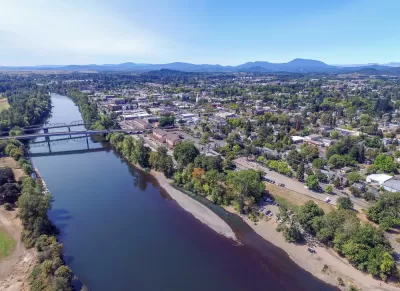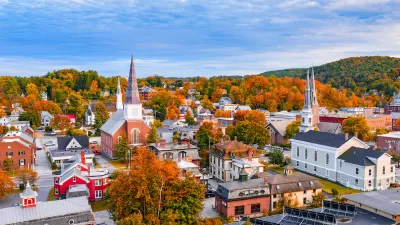House Bill 2001 didn't ban single-family houses altogether, just single-family zoning, so change will take time, and money. There are a lot of unknowns for residents to grapple with when it comes to statewide upzoning.

YIMBYs, urbanists, and other pro-development forces celebrated Oregon's approval of House Bill 2001, which will end single-family zoning in most Oregon cities. Planetizen called the decision history-making and other media outlets analyzed just how the State Legislature was able to negotiate such a game-changing piece of land use reform.
As Jasmine Masalmeh reports, however, many residents of Oregon are left grappling with the prospect of change coming to their neighborhoods, starting with examples from the city of Corvallis.
Proponents of House Bill 2001 said places such as Corvallis, which has the smallest percentage of affordable housing of any Oregon city, could particularly benefit. The bill aims to increase the supply of affordable homes by allowing more kinds of houses in more neighborhoods.
But residents such as Wershow, president of his neighborhood association, say that won’t necessarily solve the housing shortage. They also worry about more traffic, noise and strain on city services.
As explained by Masalmeh, Corvallis has until 2022 to update its zoning code in accordance with the new state law. The question left open ended by the is how much change, and when, cities like Covallis can expect once the new land use regime takes effect.
FULL STORY: Oregonians worry new zoning law may change neighborhoods

Planetizen Federal Action Tracker
A weekly monitor of how Trump’s orders and actions are impacting planners and planning in America.

Maui's Vacation Rental Debate Turns Ugly
Verbal attacks, misinformation campaigns and fistfights plague a high-stakes debate to convert thousands of vacation rentals into long-term housing.

Restaurant Patios Were a Pandemic Win — Why Were They so Hard to Keep?
Social distancing requirements and changes in travel patterns prompted cities to pilot new uses for street and sidewalk space. Then it got complicated.

In California Battle of Housing vs. Environment, Housing Just Won
A new state law significantly limits the power of CEQA, an environmental review law that served as a powerful tool for blocking new development.

Boulder Eliminates Parking Minimums Citywide
Officials estimate the cost of building a single underground parking space at up to $100,000.

Orange County, Florida Adopts Largest US “Sprawl Repair” Code
The ‘Orange Code’ seeks to rectify decades of sprawl-inducing, car-oriented development.
Urban Design for Planners 1: Software Tools
This six-course series explores essential urban design concepts using open source software and equips planners with the tools they need to participate fully in the urban design process.
Planning for Universal Design
Learn the tools for implementing Universal Design in planning regulations.
Heyer Gruel & Associates PA
JM Goldson LLC
Custer County Colorado
City of Camden Redevelopment Agency
City of Astoria
Transportation Research & Education Center (TREC) at Portland State University
Jefferson Parish Government
Camden Redevelopment Agency
City of Claremont





























